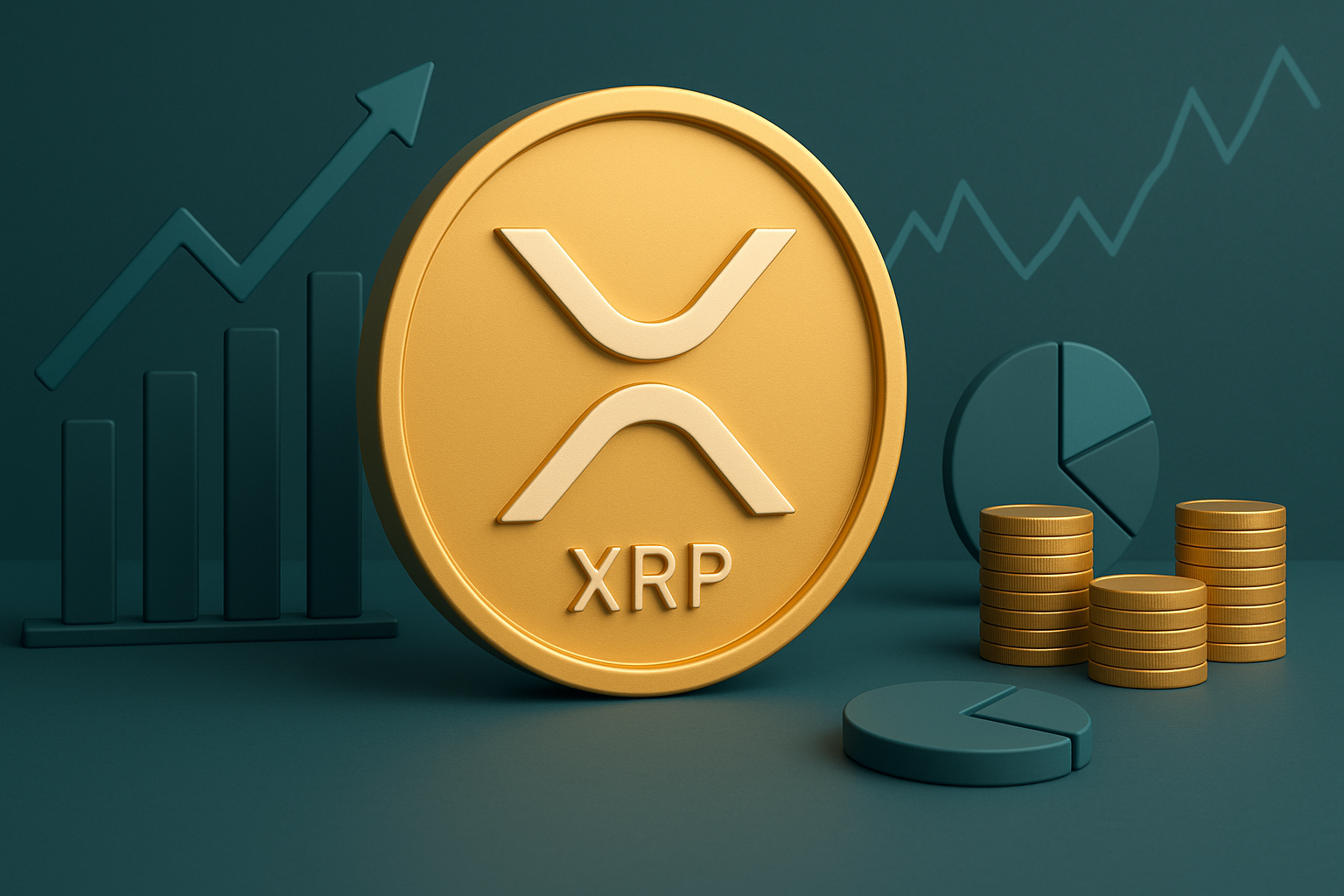
Ripple's XRP has established itself as one of the top cryptocurrencies in the digital asset market, known for its focus on improving international payment systems. As one of the earliest blockchain projects, XRP continues to attract interest from both individual investors and financial institutions. This guide explores where to buy XRP and the essential factors to consider before investing in this cryptocurrency.
What Is XRP and Its Purpose
XRP is a cryptocurrency that serves as the native token for the Ripple payment network. It was designed to facilitate fast, secure, and low-cost cross-border transactions, making it particularly valuable for financial institutions. If you want to buy XRP, you'll be investing in a digital asset that bridges the gap between traditional banking systems and blockchain technology.
Unlike Bitcoin, XRP focuses on solving specific problems in the global payments industry. It can process transactions in just 3-5 seconds and handle up to 1,500 transactions per second, making it significantly faster than many other cryptocurrencies.
XRP functions as a bridge currency, allowing for seamless exchanges between different currencies (both crypto and fiat). This utility has positioned it as a practical tool for international money transfers, reducing costs associated with traditional banking systems.
Where to Buy XRP: Top Platforms
Centralized Cryptocurrency Exchanges
Centralized exchanges remain the most popular method for purchasing XRP. Major platforms like Binance, Coinbase, Kraken, and Bybit offer user-friendly interfaces that make it easy for beginners to navigate the buying process.
These exchanges provide key advantages including simple onboarding, high liquidity ensuring quick transactions, robust security measures, multiple payment options, and the ability to convert between fiat currencies and XRP.
However, these conveniences come with trade-offs. You must trust the exchange with custody of your assets, there's potential for security breaches, withdrawal fees can be significant, and regulatory issues may affect availability in certain regions.
Peer-to-Peer (P2P) Services
P2P exchanges create direct connections between XRP buyers and sellers, removing the intermediary typically present in centralized platforms. This direct approach often results in lower fees and enhanced privacy.
While dedicated P2P support specifically for XRP is somewhat limited, several major exchanges have integrated P2P marketplaces where XRP trading is possible, including Binance, KuCoin, Bybit, and OKX.
The main advantage is flexibility in payment methods, but beginners should proceed with caution as these platforms typically offer fewer protections against fraud compared to centralized exchanges.
Decentralized Finance (DeFi) Platforms
DeFi platforms offer another avenue for XRP acquisition, though with some technical nuances. Since XRP exists on its own ledger (XRPL), it requires special handling to interact with Ethereum-based DeFi protocols.
This is typically achieved through "wrapped" versions of XRP—tokens that represent XRP on other blockchains. Platforms supporting such trading include Sologenic (native XRPL DEX), Uniswap, PancakeSwap, and Aave.
DeFi platforms offer greater control over your assets and additional earning opportunities through yield farming or liquidity provision. The trade-off is increased complexity, technical knowledge requirements, and potential smart contract risks.
Cryptocurrency ATMs and Wallets
For those preferring physical interaction, cryptocurrency ATMs in many cities now support XRP purchases. These machines allow you to insert cash and receive XRP directly to your wallet. Websites like Coin ATM Radar can help locate XRP-supporting ATMs.
Several cryptocurrency wallets now integrate payment processors, allowing direct XRP purchases within the application. Examples include Exodus, Trust Wallet, and Ledger Live. While convenient, these options typically charge higher fees than exchanges but offer immediate self-custody.
How to Buy XRP: Step-by-Step Guide
Different platforms require different approaches for purchasing XRP:
On Centralized Exchanges:
- Create an account on your chosen exchange
- Complete identity verification
- Deposit funds using your preferred payment method
- Navigate to the XRP market or trading pair
- Enter the amount of XRP you wish to purchase
- Review and confirm your transaction
On P2P Platforms:
- Register and verify your account on a P2P marketplace
- Browse available XRP sellers and filter by payment methods
- Select a reputable seller and initiate a trade
- Follow platform instructions for secure payment
- Confirm receipt of XRP after payment verification
Storing and Securing Your XRP
Properly securing your XRP is just as important as the initial purchase. Your storage strategy should balance security needs against convenience of access.
Hardware Wallets offer the highest security level by storing your private keys offline on a physical device. Popular options include Ledger Nano series, Trezor devices, and Keepkey. These protect your XRP from online threats, making them ideal for long-term storage.
Software Wallets provide a middle ground between security and accessibility. Good options include XUMM (dedicated XRP wallet), Exodus, Trust Wallet, and Atomic Wallet. These applications store your keys on your device, offering decent protection while maintaining easy access.
Custodial Wallets (exchange accounts) offer maximum convenience but place your XRP under third-party control. This approach is suitable for frequent traders, beginners, or small amounts of XRP.
Factors to Consider Before Investing in XRP
Before committing funds to XRP, several important factors deserve careful consideration:
Regulatory Environment: XRP has faced significant regulatory scrutiny, most notably through the SEC lawsuit against Ripple Labs. While recent court developments have been favorable for Ripple, regulatory uncertainty remains a key risk factor.
Market Volatility: Like all cryptocurrencies, XRP experiences significant price fluctuations. Investors should be prepared for this volatility and consider whether their financial situation can withstand temporary losses.
Use Case Viability: XRP's value proposition centers on institutional adoption for cross-border payments. Evaluating partnerships with financial institutions and real-world implementation progress is crucial for assessing long-term potential.
Frequently Asked Questions About XRP
Is XRP a good investment in 2025?
While XRP has shown resilience despite regulatory challenges, its investment potential depends on your risk tolerance and the outcome of ongoing legal issues. The settlement with the SEC has removed some uncertainty, but investors should still consider XRP as a speculative part of a diversified portfolio.
Can I stake XRP for passive income?
XRP doesn't support traditional staking as it doesn't use a Proof-of-Stake consensus mechanism. However, you can earn passive income through lending platforms, liquidity pools, or exchange rewards programs that support XRP holdings.
What's the difference between Ripple and XRP?
Ripple is the company that created the payment protocol, while XRP is the independent digital asset that can be used within that protocol. Ripple owns a significant amount of XRP but doesn't control the XRP Ledger, which operates as a decentralized, open-source technology.
Is XRP available in all countries?
XRP availability varies by region due to different regulatory frameworks. Some exchanges temporarily delisted XRP during the SEC lawsuit, especially in the US, but many have relisted it following favorable court rulings. Always check your local regulations.
How much XRP should I buy as a beginner?
As with any cryptocurrency investment, only invest what you can afford to lose. Many beginners start with a small amount (e.g., $50-$100) to understand the technology and trading process before considering larger positions.
Conclusion
XRP represents a unique cryptocurrency with specific utility in the cross-border payments space. Its availability across numerous platforms makes it accessible to various investor types, from beginners to advanced traders.
When purchasing XRP, prioritize security, consider your investment goals, and stay informed about regulatory developments. By combining careful research with appropriate risk management, you can make more informed decisions about including XRP in your cryptocurrency portfolio.







